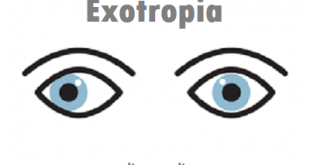Definition
Endophthalmitis is an inflammatory process of the inner layers of the eye, which may be either infectious or sterile. Infectious endophthalmitis can lead to irreversible vision loss if not treated quickly. Based on the entry mode of the infectious source, endophthalmitis is divided into endogenous and exogenous types. Exogenous endophthalmitis occurs via direct inoculation of infectious organisms during cataract surgery, ocular trauma, or intravitreal injection. Endogenous endophthalmitis results from hematogenous seeding. Sterile endophthalmitis may result from toxins or retained lens material after an ocular operation.
Endophthalmitis
Clinical features vary depending on the type and course of the disease. Features may include decreased vision, conjunctival injection, ocular pain, hypopyon, and corneal edema. The diagnosis primarily depends on history and ophthalmological examination, and treatment is based on the underlying cause. Sterile endophthalmitis generally resolves spontaneously while infectious endophthalmitis is treated with antimicrobials (antibiotics or antifungals). Vitrectomy may be needed in severe diseases.
Classification of Endophthalmitis
A classification system introduced by Greenwald takes into consideration the affected areas of the globe and the associated visual prognosis.
It is broadly classified as exogenous or endogenous.
Exogenous endophthalmitis
This type occurs as a result of the inoculation of microorganisms into the eye through a surgical, injury wound or by direct spread of infection from the surrounding tissues.
- Postoperative endophthalmitis: It is the most common form of endophthalmitis. It represents approximately 70% of all cases. It occurs after intraocular surgery when the entire thickness of the cornea or sclera is penetrated, and rarely after extraocular interventions such as suturing of a scleral buckle, strabismus- and pterygium- surgery, or removal of corneal sutures.
- Post-traumatic endophthalmitis: It is one of the most severe complications of open eye injury. It represents 25% of all endophthalmitis cases, with incidence ranging between 3% and 30%. Post-traumatic endophthalmitis has a poor prognosis since only of patients maintain visual acuity of 0.05 or more. Post-traumatic endophthalmitis is usually clinically manifested as acute endophthalmitis. The speed of clinical picture development varies from a few hours to a few weeks.
Endogenous endophthalmitis
Also known as metastatic endophthalmitis, it occurs when pathogenic microorganisms from inflammatory lesions elsewhere in the body enter the bloodstream, and via a damaged hemato-ocular barrier they enter the retina and the vitreous. This form is the rarest form (5-10% of all endophthalmitis), yet, it has the worst prognosis regarding visual function.
- Focal endophthalmitis responds well to intravenous antibiotics and generally results in minimal sequelae.
- Posterior diffuse endophthalmitis and panophthalmitis are associated with a much poorer prognosis; often these conditions lead to blindness, atrophy of the globe, or enucleation.
Endophthalmitis pathophysiology
Endogenous endophthalmitis results from the metastatic spread of the organism from a primary site of infection in the setting of bacteremia or fungemia. Most frequently, the organism reaches the eye through the posterior segment vasculature. The right eye is more commonly involved probably due to the more direct route through the right carotid artery. Direct spread from contagious sites can also occur in cases of central nervous system infection via the optic nerve.
Unlike postoperative and posttraumatic endophthalmitis where tissue damage results primarily from toxins produced by the organism, it is postulated that in endogenous endophthalmitis, the damage is most probably due to a septic embolus that enters the posterior segment vasculature and acts as a nidus for dissemination of the organism into the surrounding tissues after crossing the blood-ocular barrier to cause microbial proliferation and inflammatory reactions within these tissues. The infection then extends from the retina and the choroid into the vitreous cavity and thereafter to the anterior chamber of the eye.
What kinds of germs cause infectious endophthalmitis?
Infectious endophthalmitis typically is caused by bacteria or fungi.
Bacterial endophthalmitis
It is a type of infectious endophthalmitis resulting from surgery. It can be caused by certain strains of common germs such as staphylococcus and streptococcus, as well as other germs such as Klebsiella pneumonia. Researchers have found that most cases occurring after cataract surgery are due to staphylococcus. Penetrating injuries to the eye are often associated with a bacterium called bacillus cereus.
Fungal endophthalmitis
It is often caused by candida organisms (candida endophthalmitis), which often live on the skin and inside the body without causing any problems. Another common fungus, aspergillus, can also be responsible for this type of infectious endophthalmitis.
A fungus called fusarium has been linked to endophthalmitis in tropical and subtropical parts of the world. However, in 2005-2006, this form of endophthalmitis was associated with a specific brand of lens care solution used by contact lens wearers.
Symptoms of Endophthalmitis
Symptoms of endophthalmitis include:
- Increasing redness
- Swelling around the eye
- Light sensitivity
- Severe pain
- Loss of vision
- Hypopyon (puss in the anterior chamber of the eye)
These symptoms may not necessarily mean a patient has endophthalmitis, other eye diseases and conditions can cause these same symptoms. An immediate eye exam is highly recommended if all of these conditions exist, especially if the patient has had a recent eye surgery, injection procedure, or trauma to the eye.
Risk factors
Risk factors can be divided into preoperative and intraoperative risk factors.
Preoperative risk factors include age below 44 years old, male sex, living in a rural area, and immunosuppressive conditions such as diabetes mellitus. Acute or chronic eyelid inflammatory disease can also be a risk factor.
Intraoperative risk factors include vitreous loss, posterior capsular rupture, the need for an anterior vitrectomy, poor corneal wound construction, and potentially the use of silicone or polymethyl methacrylate intraocular lenses rather than acrylic.
Complications
Complications of endophthalmitis may include the following:
- Impairment of vision
- Complete loss of vision
- Loss of eye architecture
- Enucleation
Endophthalmitis diagnosis
Presentation: Patient presentation ranges from asymptomatic to symptoms typical of severe uveitis, including a red, painful eye with photophobia, floaters, or reduced vision. Although EE is most often unilateral, up to a third of cases have bilateral involvement.
Ocular examination: Symptomatic patients may have reduced visual acuity, conjunctival injection, corneal edema, hypopyon, anterior chamber cells, iritis, and vitritis.
A key diagnostic finding associated with an endogenous cause is the presence of a white infiltrate originating in the choroid and sometimes erupting into the vitreous cavity. The fundus may be obscured because of vitreous haze or vitritis. If the posterior segment cannot be visualized, B-scan ultrasound can help identify vitritis or chorioretinal infiltrates.
Differential diagnosis: A number of conditions, infectious and noninfectious, should be considered in formulating the diagnosis.
Diagnostic tests: Suspected EE should prompt a systemic workup for occult infection.
Vitreous fluid biopsy: Vitreous fluid obtained by means of vitrectomy has a higher diagnostic yield than vitreous fluid from needle biopsies, although both are preferable to aqueous tap, most likely because the sample is taken closer to the infectious nidus.
Blood cultures are positive in only a third of cases. Polymerase chain reaction (PCR) can identify both bacteria and fungi, even in culture-negative cases.
Beta-glucan assay: In cases of suspected fungal EE, a serum beta-glucan assay can detect the presence of beta-D glucan found in the fungal walls of many species. The sensitivity and specificity depend on the cutoff value and the commercial kit used; for example, a study in Japan using a threshold of 60 picograms/mL for invasive fungal infections showed a positive predictive value of 70% and a negative predictive value of 98%. These values are higher than those obtained with blood cultures.
Imaging: Neuroimaging can evaluate for an intraocular foreign body as well as for intraorbital or intracranial sources of infection.
Treatment for Endophthalmitis
Treatment depends on:
- What caused the endophthalmitis
- The state of vision in the affected eye
When the condition is caused by a bacterial infection, options include one or more of the following:
- Intravitreal antibiotics – Antibiotics are injected directly into the infected eye. Usually, some vitreous is removed to make room for the antibiotic.
- Intravenous antibiotics – Antibiotics may be injected into a vein. This may be prescribed for patients with severe infections.
- Topical antibiotics – Antibiotics may be applied to the surface of the eye when there is a wound infection in addition to endophthalmitis.
- Vitrectomy – Part of the eye’s infected vitreous fluid is removed. It is replaced with sterile saline or another compatible liquid. This usually is done if vision loss is so severe that the person is nearly blind.
A) Slit-lamp image of acute endophthalmitis following cataract surgery with significant fibrinous and exudative response and corneal infiltrate (white arrow). B) A postoperative slit-lamp image of the same eye following vitrectomy and intraocular lens removal. Following the debulking of the exudates and bacterial burden, the corneal clarity increased.
When the condition is caused by a fungal infection, doctors usually inject an antifungal medication directly into the infected eye. The medication may also be given intravenously. Or, the person may receive an oral antifungal drug.
The ophthalmologist will monitor your progress. You will have frequent eye exams to monitor whether the treatment is improving your vision or not.
The following are the medicines used to treat endophthalmitis
- Naphazoline is a decongestant, prescribed for conjunctivitis with symptoms of redness.
- Fluorometholone is a corticosteroid, prescribed for the swelling caused by infections, injury, surgery, or other conditions.
- Oxymetazoline is a decongestant, used to relieve nasal and sinus congestion due to colds, allergies, and hay fever. The ophthalmic indication is for relieving redness in the eye.
- A combination of intravitreal Vancomycin and Ceftazidime or alternatively a combination of Vancomycin and Amikacin is good to treat endophthalmitis.
Prevention
You can prevent this by:
- Use protective eyewear when doing things around the house that can injure the eye. This includes things like sawing wood.
- Wear appropriate eyewear and safety gear during contact sports.
- Follow your doctor’s home care instructions after eye surgery or an eye injection. For example, wash your hands before putting in eye drops. Don’t let the eye-drop bottle touch the eye, which can contaminate the dropper.
 Diseases Treatments Dictionary This is complete solution to read all diseases treatments Which covers Prevention, Causes, Symptoms, Medical Terms, Drugs, Prescription, Natural Remedies with cures and Treatments. Most of the common diseases were listed in names, split with categories.
Diseases Treatments Dictionary This is complete solution to read all diseases treatments Which covers Prevention, Causes, Symptoms, Medical Terms, Drugs, Prescription, Natural Remedies with cures and Treatments. Most of the common diseases were listed in names, split with categories.







